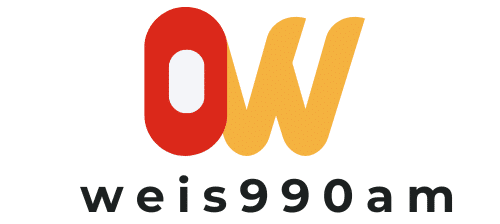What Innovations Are Driving the Adoption of Smart Fabrics in Healthcare?

A new wave of innovation is sweeping across the world, and it’s all about making our lives smarter – from our phones to our homes and now, even our clothes. You’ve probably heard about smart fabrics. If you haven’t, think textiles embedded with technology, capable of doing much more than keeping us warm or stylish. The smart fabrics market is growing at a phenomenal rate, and one sector where this growth is especially evident is healthcare. Let’s explore the revolutions pushing the boundaries of these high-tech materials in the medical field.
Integrating Sensors into Textiles
The most significant innovation that has accelerated the adoption of smart fabrics in healthcare is the integration of sensors into textiles. These sensors can monitor vital statistics such as heart rate, body temperature, sleep patterns, and much more.
Cela peut vous intéresser : What Is the Future of Personal Security Drones in Public and Private Spaces?
The concept of wearable healthcare devices is not new. However, the innovation lies in weaving these sensors into the fabric of our clothes, making them more comfortable and less intrusive for the patient. This is a major leap from conventional healthcare monitoring devices that can be bulky and uncomfortable, deterring consistent use.
Biosensing textiles are becoming a game-changer in patient monitoring. These fabrics, equipped with biosensors, can gather comprehensive health data, contributing to more informed and personalized medical care.
Lire également : How Can AI-Enhanced Drones Optimize Urban Planning and Development Projects?
The Role of Data in Smart Fabrics
In the era of digital transformation, data is the new oil. Smart fabrics generate a wealth of data that can provide invaluable insights into a patient’s health status.
For instance, a smart fabric embedded with sensors can continuously collect data about a patient’s heart rate, respiratory rate, and other vital signs. This data can then be analyzed using advanced algorithms and artificial intelligence to predict potential health issues. By providing real-time, continuous, and accurate healthcare data, smart fabrics enable proactive health management, potentially predicting conditions before they become critical.
Moreover, the integration of these smart fabrics with healthcare systems allows for remote monitoring of patients. This is particularly beneficial for elderly patients or those living in rural areas, for whom regular hospital visits might be challenging.
Advancements in Material Sciences
The growth of smart fabrics in healthcare is also catalyzed by advancements in material sciences. The development of conductive textiles that can support electronic components and signals without compromising the cloth’s flexibility and comfort is a significant achievement.
Innovations like nanoparticle treatments have also made fabrics more resilient and able to withstand the rigors of daily use, without damaging the embedded technology. These fabrics can be washed, stretched, and exposed to various environmental conditions while continuing to function effectively.
Advancements in material sciences have not only made smart fabrics more durable but also opened up possibilities for creating fabrics with specific properties. For example, antibacterial smart fabrics can help prevent infection in patients with wounds or compromised immune systems.
Smart Fabrics in Medical Fashion
Medical fashion might seem like a contradictory term. But with smart fabrics, it’s becoming a reality. Aesthetics is an integral part of wearable technology. If a device or clothing item is not visually appealing or comfortable, users are less likely to adopt it.
When it comes to patient monitoring, wearing a fashionable item that also monitors your health is far more appealing than a medical device that screams "I’m ill." Designers are increasingly collaborating with scientists to create smart fabrics that not only serve a medical purpose but also meet fashion criteria. Therefore, patients can benefit from the constant monitoring of their health without sacrificing their personal style or comfort.
Future Applications of Smart Fabrics in Healthcare
As exciting as the current applications of smart fabrics are, the future promises even more groundbreaking uses. Imagine a world where clothes can administer drugs, monitor recovery in real-time after surgery, or track the progression of chronic diseases.
With the rapid advancements in technology and material sciences, these scenarios are not as far-fetched as they sound. Smart fabrics could transform the current reactive healthcare approach into a proactive one, where prevention is as emphasized as treatment.
In summary, the adoption of smart fabrics in the healthcare sector is driven by several innovations, namely the integration of sensors into textiles, the role of data in providing personalized care, advancements in material sciences, and the adoption of smart fabrics in medical fashion. These innovations are paving the way for a future where our clothes could play a significant role in maintaining our health.
The Market Growth for Smart Fabrics in Healthcare
The market size for smart fabrics in healthcare is expanding rapidly, owing to their increasing application in remote patient monitoring, drug delivery, and overall patient comfort. Key players in the wearable technology sector are investing heavily in the development of smart textiles, driven by the potential these materials hold in transforming the healthcare landscape.
Several factors are influencing the market growth for smart fabrics. Primarily, as the global population ages, the need for non-invasive, continuous health monitoring solutions is growing. Smart textiles, with their ability to seamlessly integrate into everyday life, offer a solution to this need.
Moreover, the COVID-19 pandemic has highlighted the importance of remote patient monitoring and sparked interest in smart fabric technology. With hospitals overcrowded and at-home isolation necessary for many, smart fabrics have shown potential in enabling remote monitoring of patients’ vital signs in real time.
Furthermore, the integration of smart fabrics with the Internet of Things (IoT) is another factor driving the textiles market. IoT devices and smart fabrics can work together to collect, analyze, and transmit data to healthcare professionals, ensuring timely and personalized care.
However, the development and wide-scale adoption of smart fabrics also face challenges. These include the high cost of smart textile production, concerns about data security, and the need for stringent regulations to govern the use and disposal of electronic components embedded in fabrics. Despite these obstacles, the overall trend indicates a positive market growth for smart fabrics in healthcare.
Drug Delivery Using Smart Fabrics
One of the most exciting areas of research in smart fabrics is their use in drug delivery systems. The idea is to create active smart clothing that can dispense medication to the wearer as needed. This could be particularly beneficial in the management of chronic diseases where medication needs to be delivered at specific intervals.
Incorporating drug delivery mechanisms into smart textiles involves embedding microcapsules or nanocarriers into the fabric. These carriers can then be designed to release their contents when triggered by certain stimuli, such as changes in body heat, pH levels, or even the detection of specific biomarkers.
For instance, a smart fabric could be developed for diabetic patients, which could monitor the wearer’s glucose levels in real time and deliver insulin when needed. This could significantly improve the quality of life for such patients, freeing them from the need to constantly monitor their blood sugar levels and administer insulin shots.
While this application of smart fabrics is still in the experimental stages, it holds immense potential. If successful, it could change the way we manage a range of diseases, from diabetes to cardiovascular disorders and beyond.
Conclusion
Smart fabrics are set to revolutionize the healthcare sector, driven by innovations in wearable technology, material sciences, and data analysis. From patient monitoring to drug delivery, these high-tech textiles promise to make healthcare more personalized, proactive, and comfortable.
While challenges, such as production costs and data security, need to be addressed, the benefits that smart fabrics offer far outweigh these hurdles. As smart fabric technology matures and becomes more integrated into our daily lives, we can expect a future where our clothes play an active role in maintaining and enhancing our health.
Thus, the growth of the smart textiles market in the healthcare sector is not only a testament to human ingenuity and technological advancement, but it also reflects a shift in how we perceive healthcare – moving from a reactive approach to a preventive and continuously monitored one.
